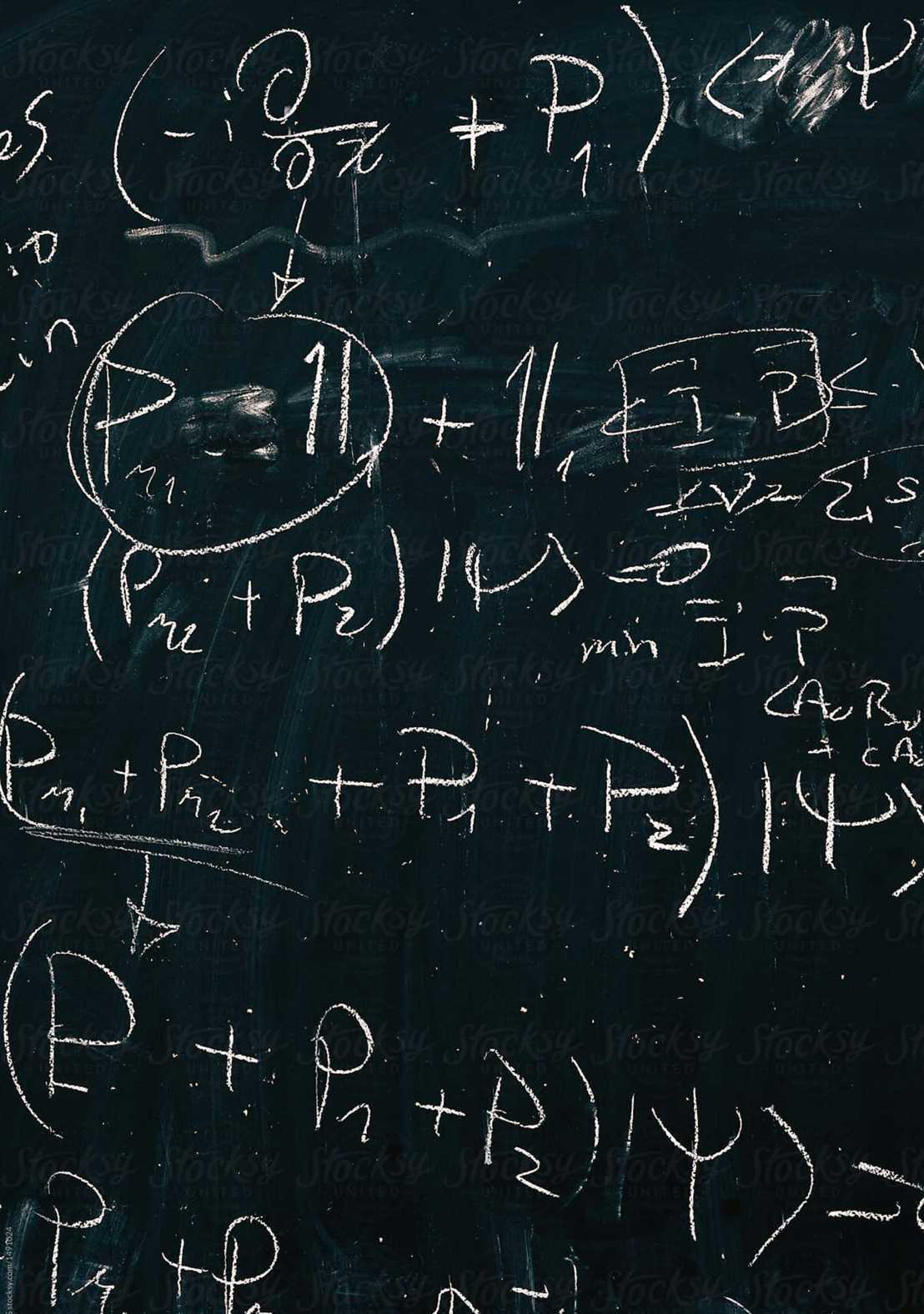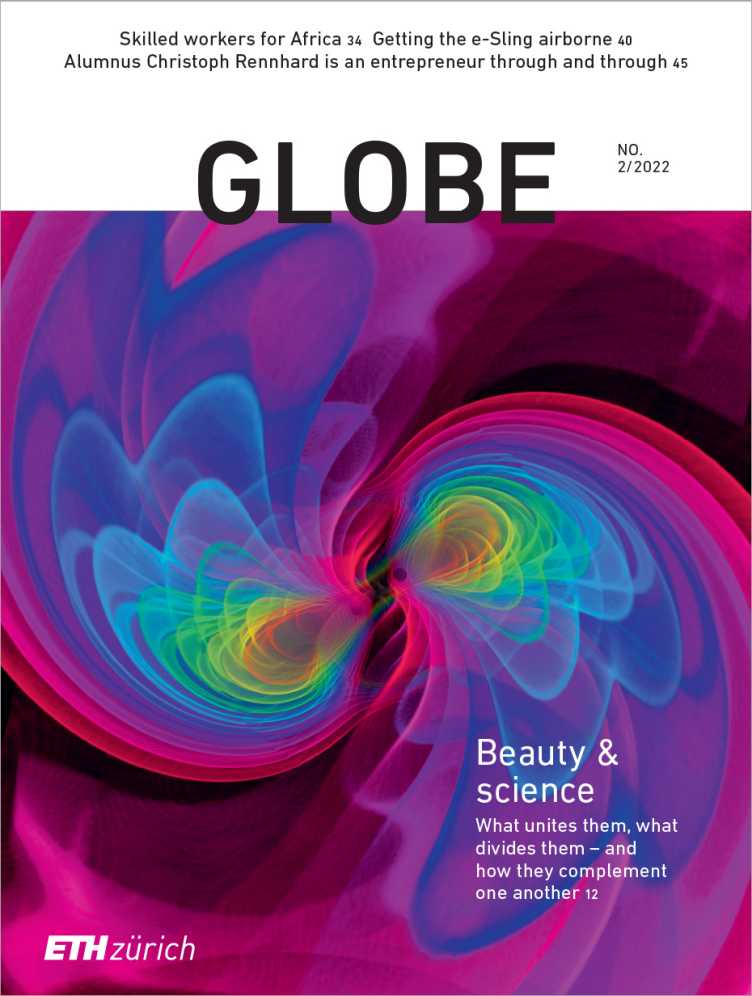…as they search for beauty
At its heart, is mathematics an aesthetic discipline? Or what does it mean if someone finds a proof “beautiful”? And what does mathematical beauty say about physical connections?

To this day, mathematics includes beautiful facts that are also familiar to us in everyday life. The golden ratio, for example, has been revered since antiquity as representing the most aesthetically pleasing proportions. Some mathematicians claim that mathematical discoveries would be virtually impossible without an aesthetic sense. “Beauty certainly touches mathematicians’ souls,” says Ana Cannas da Silva, ETH Professor for Mathematics, whose main field of research is geometry. For her, mathematical and aesthetic curiosity go hand in hand. In Portugal, for example, pavements are often laid in complex symmetrical patterns which visualise mathematical phenomena. She has also authored an illustrated book on this topic, entitled “Symmetry step by step”.
When asked about the meaning of beauty in mathematics, the professor says it’s not just about the visuals, but also about language. She shares the view of the pioneer of modern physics, Galileo Galilei (1564 – 1642), that the universe is written in the language of mathematics.
An intense experience
There is no fixed rule as to what constitutes mathematical beauty: “For me, the abstract quality of mathematics is the source of its beauty,” says Emmanuel Kowalski, who researches analytic number theory, a branch of pure mathematics. He concedes: “Not all mathematicians see identical things as beautiful in the same way, but most personally experience the intense beauty of mathematics.” Ana Cannas da Silva adds: “Perceptions of simplicity, clarity, elegance and symmetry are often associated with mathematical beauty.” Even without a consensus as to what beauty actually means, mathematicians within a subcommunity tend to agree on which theorems, proofs, formulas or constructions are most beautiful in their field.
“A beautiful proof is usually concise and involves surprising new ideas.”Benny Sudakov
The gateway to truth in mathematics lies in the proof. Proofs are considered beautiful, or rather “elegant”, if they derive their statements as directly as possible from proven, true statements, deal sparingly with additional assumptions, solve multiple problems and allow for new results. “A beautiful proof is usually concise and involves surprising new ideas. Although there are impressive results with long, technical proofs, we usually find shorter and more elegant proofs once we understand them,” explains Benny Sudakov, a mathematician specialising in combinatorics.

More controversial is what makes a theory or equation beautiful. There is currently no generally accepted mathematical rule or criterion for it, and it does not come about automatically. Conversely, mathematicians often speak of beauty when a result or proof creates a new connection between two areas or statements of mathematics that at first glance have nothing to do with each other. These interconnections constitute deep relationships. Kowalski says: “My strongest aesthetic reactions in mathematics are where completely different approaches happen to meet in a profound way.” In such moments he experiences how closely the individual parts of mathematics are interconnected.
Beautiful equations
Because of the deep connections it shows, many consider Euler’s identity to be one of the most beautiful and profound mathematical equations. It is named after the Swiss mathematician Leonhard Euler (1707 – 1783). The profound beauty of the equation eiπ + 1 = 0 is due to the fact that three basic arithmetic operations occur exactly once each (addition, multiplication and exponentiation), and that it also creates a simple connection between five of the most fundamental mathematical constants: Euler’s number e, the imaginary number i, the circle constant Pi, the number 1, and zero.
“In mathematics, beauty can be a pointer to what is likely true.”Ana Cannas Da Silva
“In mathematics, beauty can be a pointer to what is likely true,” says Ana Cannas da Silva. For Emmanuel Kowalski, beauty provides an underlying principle leading to truth: “A beautiful equation allows greater confidence to take a certain approach to solving a problem. But you can be wrong, especially if you don’t understand the facts well enough.” Benny Sudakov points out: “Theorems with unattractive proofs are also accepted.”

The question of the beauty of elegant theories and formulas is also discussed in branches of the natural sciences influenced by mathematics, such as theoretical physics. Here the path to truth is through experiments. The general relativity theory of Albert Einstein (1879 – 1955) is considered beautiful because its mathematical statements can be repeatedly measured and empirically proven. In physics, however, there are some entities that can be postulated mathematically but have not yet been measured – even using large research facilities such as particle accelerators or space telescopes. The physicist Sabine Hossenfelder has therefore challenged the assumption that the best physical theories are beautiful, and beautiful theories must be true.
Eugene Demler, Professor for Theoretical Physics at ETH, sees it like this: “My experience in physics is that when one discovers something about nature that is true, it can be described in an elegant and beautiful way. Our biggest aspiration is to find a fundamental equation with a few letters. That really is beautiful.”
As an example of a beautiful, fundamental equation, he cites Albert Einstein’s law E = mc². This states that when energy changes, mass changes as well – and vice versa. Many experiments have proven this equation’s legitimacy. But Demler does not conclude from this that beautiful mathematical statements are true. “Theoretical physicists are often divided into truth seekers and beauty seekers. The great ones achieve both.”

Comments
No comments yet